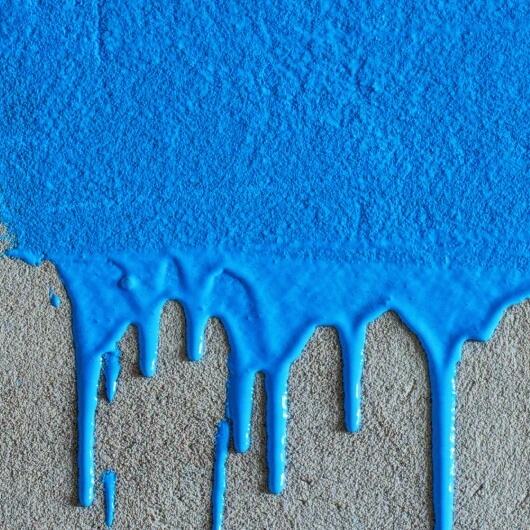Coating concrete floors is an excellent DIY project for revitalizing garages, basements, patios, or workshops. Here is a concise guide to key steps and considerations:
Critical Success Factors:
1. Surface Preparation is Paramount (90% of the Job):
a. Thorough Cleaning: Remove all dust, grease, oil, wax, sealers, and old paint. Use degreasers and concrete cleaners when necessary. Sweep and vacuum meticulously.
b. Repairing Cracks & Damage: Fill cracks and holes with concrete patching compound. Level uneven areas.
c. Surface Grinding/Acid Etching: Bare concrete is best treated by grinding OR acid etching (mechanical methods like grinding/diamond abrasion OR acids like hydrochloric acid/safer phosphoric acid etch). This opens pores and creates a texture for optimal paint adhesion.
Note: Pay special attention to operational safety when using grinders; professional assistance is recommended. Ensure ventilation and wear protective masks, gloves, etc. when acid etching. If neither method is feasible, thorough cleaning + crack repair can still achieve significantly improved results compared to the original state.
d. Moisture Test: Securely tape a 2ft x 2ft plastic sheet to the floor. Check after 24-48 hours. Condensation under the plastic indicates moisture issues requiring pre-treatment (e.g., epoxy moisture barrier primer, dehumidifier) before coating.
2. Selecting the Right Product:
Solvent-Free Self-Leveling Epoxy Floor Coating (Best Results & Durability):
- Ultra-high adhesion, excellent abrasion and impact resistance.
- Best suited for garages, workshops, high-traffic areas.
- Highly decorative with a smooth, level surface achieving a mirror-like finish. Requires careful application.
Epoxy Resin Floor Coating (Durable & Cost-Effective):
- Two-component epoxy (resin + hardener) provides exceptional chemical resistance, abrasion resistance, and stain resistance.
- Suitable for garages, workshops, high-traffic areas. Requires careful mixing and application.
Acrylic Floor Coating (Simpler & Most Cost-Effective):
- Easier application, faster drying, low odor, good UV resistance.
- Less durable than epoxy but still suitable for basements, patios, sunrooms.
- Choose 100% acrylic formulas specifically designed for concrete floors.
3. Primer:
Epoxy Primer: Essential for epoxy topcoats. Provides maximum adhesion and acts as a moisture barrier.
Waterborne Acrylic Primer: Highly recommended for acrylic coating (especially on new concrete or uncertain substrates). Improves adhesion and color uniformity.
4. Application Methodology is Crucial:
Tools: Use high-quality brushes, rollers (choose nap length suitable for concrete - typically 1/2 inch to 3/4 inch), and potentially a paint pad system. An extension pole is essential.
Temperature & Humidity: Apply within the manufacturer's specified range (our products typically require 10°C to 35°C and humidity below 85%). Concrete surface temperature is critical.
Thin Coats: Apply primer and topcoat in thin, even layers according to instructions. Thick coats lead to peeling and bubbling. Multiple thin coats are superior to one thick coat.
Cutting-In: Brush paint along edges and corners first.
Rolling Technique: Work in manageable sections (e.g., 4ft x 4ft). Maintain a wet edge to avoid lap marks. Roll in one direction for the final pass of each coat.
Recoat Times: Strictly follow the manufacturer's specified times. Too short an interval causes wrinkling; too long reduces intercoat adhesion.
Drying/Curing: Avoid heavy loads or moving furniture back until fully cured (which may take several days to over a week). Curing is different from surface drying.
Key Considerations & Tips:
Time Commitment: Preparation takes the longest (potentially days). Painting itself might take 1-2 days with drying intervals. Do not rush.
Ventilation: Critical, especially when using solvent-based products or acid etching. Use fans and open windows/doors. Wear a respirator.
Safety Gear: Gloves (chemical-resistant for etching), safety goggles, knee pads, respirator, long sleeves/pants.
Slip Resistance: Use walk-off mats at entrances. Add anti-slip additives to the topcoat in wet-prone areas (garages, patios).
Maintenance: Clean with mild, pH-neutral cleaners. Avoid harsh chemicals or abrasives.
Summary Steps:
1. Rigorously Prepare the Surface: Clean, Repair, Grind/Etch, Dry, Moisture Test.
2. Choose Wisely: Select the right product (Epoxy, Acrylic, etc.) based on your specific needs and environment.
3. Apply Primer: Use the recommended primer for optimal adhesion and longevity.
4. Apply Correctly: Strictly follow instructions regarding temperature, mixing, thin coats, recoat times, and curing.
5. Be Patient: Allow ample drying and curing time before subjecting the floor to use.
By diligently following these steps, you can achieve an attractive and durable painted concrete floor that lasts for years. Always refer to the specific instructions provided by the paint and primer manufacturers you choose. Good luck with your project!

 Hot News
Hot News2025-11-14
2025-11-03
2025-10-24
2025-10-14
2025-10-10
2025-09-28

Copyright © Yiwu Zhuangyu Trading Co., Ltd. All Rights Reserved - Privacy Policy - Blog